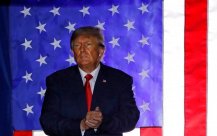When the U.S. government put Huawei on the blacklist on the grounds of threatening national security, the Chinese company cut off the opportunity to purchase US semiconductors and other key technologies.Huawei may bypass these restrictions now.
According to Bloomberequipment.According to public records and satellite photos, the company that has not been established for a long time is Pengxin Micro -integrated circuit manufacturing Co., Ltd. It is operated by a former Huawei executive and is building civil engineering near Huawei Headquarters.
People familiar with the matter said that Huawei expected to buy most of Pengxin micro (if not all) products.Pengxin Micro plans to receive these equipment as early as 2023.
The United States has tried to cut off the chip to the company, but if Pengxin Micro can successfully start, it can effectively help Huawei avoid Washington's restrictions.Huawei's representative refused to comment.
Although Peng Xinwei is low -key, it has attracted the attention of the Industry and Security Agency (BIS) of the US Department of Commerce, which helps the bureau to supervise the trade restrictions of the United States.
BIS said in response to inquiries that the department noticed the startup and "the allegations of its relationship with Huawei.""BIS has always been paying attention to whether someone sets regulations to avoid export control."
It is unclear whether Pengxin's plan has clearly violated US trade sanctions.If the company intends to supply Huawei, the chip manufacturing equipment it purchased from the United States will be strictly limited.It can enjoy more freedom from foreign suppliers, such as ASML and Tokyo Electron LTD., but these companies may also need to seek US approval, depending on the number of US technology in its products.
Peng Xinwei stated in a statement that it has signed an agreement with the supplier, the goal is to start production in 2025, but not mentioned customers.A person familiar with its strategy revealed that the company plans to start researching its 28 nanote technology next year, six generations behind the most advanced process.



